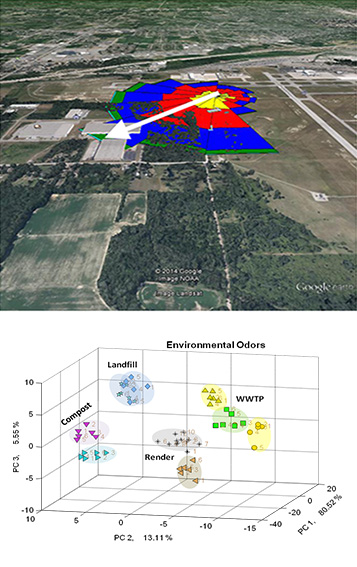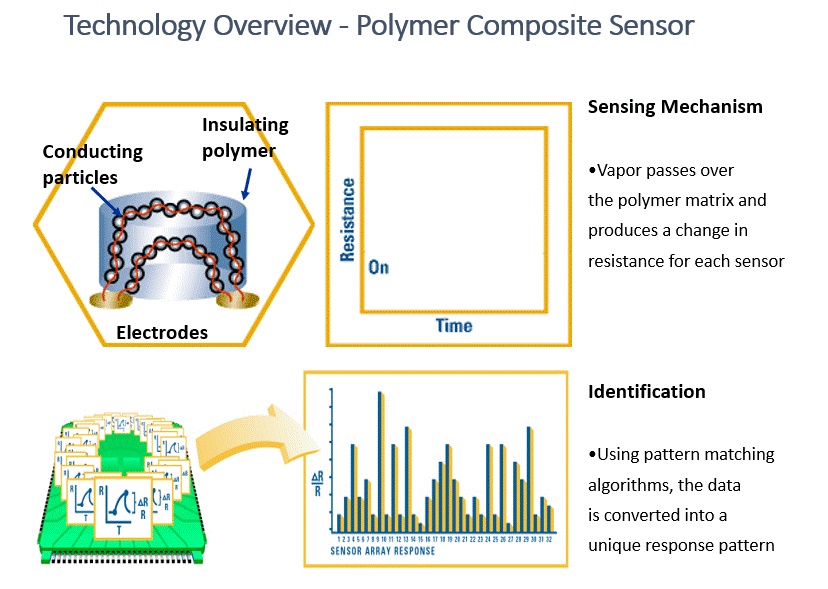In the realm of sensing technology, nanocomposite sensors have emerged as a revolutionary solution that bridges the gap between precision, durability, and adaptability. These sensors, constructed by integrating nanomaterials into traditional sensor systems, have found remarkable applications across diverse industrial and commercial settings. From enhancing safety measures to optimizing efficiency, the integration of nanocomposite sensors is reshaping how we perceive and interact with our environment. In this blog, we'll explore eight types of industrial and commercial settings where nanocomposite sensors are making significant contributions.

- Healthcare and Medical Facilities
Nanocomposite sensors are playing a vital role in the healthcare sector. They are used in medical devices to monitor patients' vital signs, detect early signs of diseases, and provide real-time data for better diagnosis and treatment. For instance, wearable nanocomposite sensors can track heart rate, blood pressure, and glucose levels, enhancing patient care and management.
- Automotive and Transportation Industry
In the automotive industry, nanocomposite sensors are integrated into vehicles to monitor engine performance, tire pressure, air quality within the cabin, and more. These sensors enhance vehicle safety, optimize fuel efficiency, and contribute to the development of autonomous vehicles by providing accurate data for decision-making.
- Aerospace and Aviation
Nanocomposite sensors are instrumental in aerospace and aviation for structural health monitoring. They detect stress, temperature changes, and structural deformations in aircraft components, helping ensure the safety and reliability of air travel.
- Environmental Monitoring and Pollution Control
Nanocomposite sensors are deployed for environmental monitoring in urban and industrial areas. They detect pollutants, gases, and particulate matter in the air and water, aiding pollution control efforts and contributing to the development of sustainable urban planning.
- Manufacturing and Quality Control
In manufacturing processes, nanocomposite sensors assist in quality control by monitoring parameters like temperature, humidity, pressure, and chemical compositions. These sensors ensure consistent product quality and process efficiency while minimizing defects.
- Energy Production and Distribution
Nanocomposite sensors play a role in the energy sector by monitoring equipment performance, such as turbines and generators, and detecting potential faults or deviations. This real-time data helps prevent breakdowns and optimize energy production and distribution.
- Food and Beverage Industry
The food and beverage industry utilizes nanocomposite sensors to monitor food quality, freshness, and safety. They can detect changes in temperature, humidity, and gas concentrations, ensuring the preservation and quality of perishable goods.
- Structural Monitoring in Construction
In the construction industry, nanocomposite sensors are embedded in building materials to monitor structural health. These sensors can detect stress, strain, and potential defects, enhancing safety and prolonging the lifespan of structures.
Benefits of Nanocomposite Sensors
- High Sensitivity: Nanocomposite sensors offer superior sensitivity, detecting even minute changes in environmental conditions.
- Durability: Nanomaterials enhance sensor durability, making them suitable for harsh environments and prolonged use.
- Real-time Data: These sensors provide real-time data, enabling swift decision-making and proactive responses to changing conditions.
- Accuracy: Nanocomposite sensors provide accurate measurements, reducing errors and ensuring reliable data collection.
- Adaptability: These sensors can be customized to monitor various parameters, making them versatile for different applications.
- Compact Design: Nanocomposite sensors are compact and lightweight, making them suitable for integration into small devices and structures.
- Cost-effectiveness: Over time, the enhanced durability and accuracy of nanocomposite sensors can lead to cost savings in maintenance and quality control.
- Innovation: The integration of nanotechnology into sensor design is fostering innovation and enabling the development of advanced applications.
Conclusion:
Nanocomposite sensors are revolutionizing how industries monitor, analyze, and respond to their environments. From healthcare to manufacturing, these environmental monitoring sensors offer high sensitivity, durability, and adaptability. As technology continues to evolve, the potential applications of nanocomposite sensors will undoubtedly expand, contributing to safer, more efficient, and sustainable practices across various industrial and commercial sectors.


No comments yet